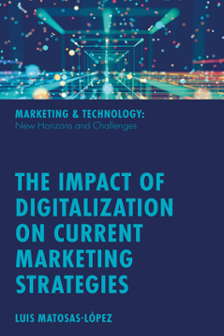
Index
The Impact of Digitalization on Current Marketing Strategies
ISBN: 978-1-83753-687-0, eISBN: 978-1-83753-686-3
Publication date: 14 March 2024
Citation
(2024), "Index", Matosas-López, L. (Ed.) The Impact of Digitalization on Current Marketing Strategies (Marketing & Technology: New Horizons and Challenges), Emerald Publishing Limited, Leeds, pp. 231-237. https://doi.org/10.1108/978-1-83753-686-320241015
Publisher
:Emerald Publishing Limited
Copyright © 2024 Luis Matosas-López. Published under exclusive licence by Emerald Publishing Limited
INDEX
- Prelims
- Chapter 1 Strategic Implications of Chatbots in Marketing: Exploring Applications and Factors of Customer Acceptance
- Chapter 2 Sensorial Customer Experiences in Online Touchpoints
- Chapter 3 How to Create a Fave and Catch the Fake: Generative Adversarial Networks in Marketing
- Chapter 4 Online Store Selection: Identifying the Constructs
- Chapter 5 Pricing 360°: A Paradigm Shift in the Way Pricing Is Managed in the Digital Economy
- Chapter 6 Introducing the Service Robot Innovation Canvas
- Chapter 7 Social Media Marketing: Adoption, Strategies, Approaches, Audience Behavior, and Content for Political Marketing
- Chapter 8 The Importance of Customer Relationship Management Systems to Business Management and Marketing Strategies
- Chapter 9 Safeguarding Privacy: Ethical Considerations in Data-Driven Marketing
- Chapter 10 Artificial Intelligence and the Perspective of Value Creation: Present Research Focus and Future Directions
- Chapter 11 The Importance of Corporate Digital Responsibility in a Digital Service World
- Chapter 12 Influence Marketing on Social Media: The Reputation Change After a Corporate or Referral Brand Crisis
- Chapter 13 Navigating the Digital Era: Exploring Consumer Behavior Across Multiple Channels: A Review and Research Agenda
- Index